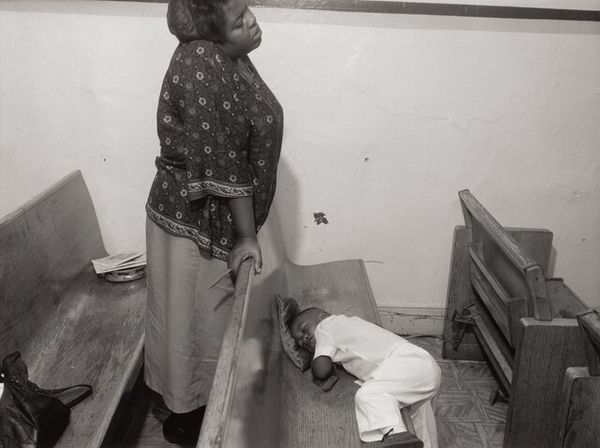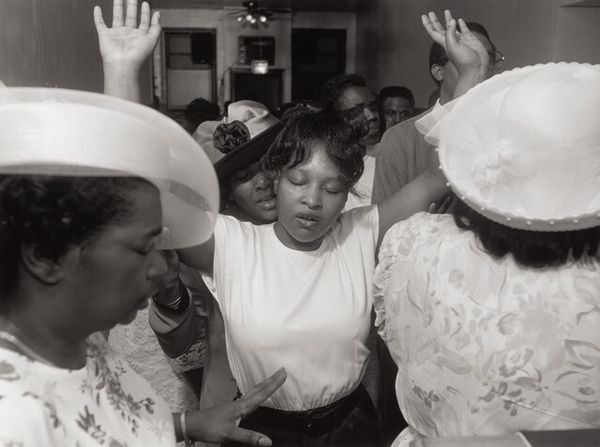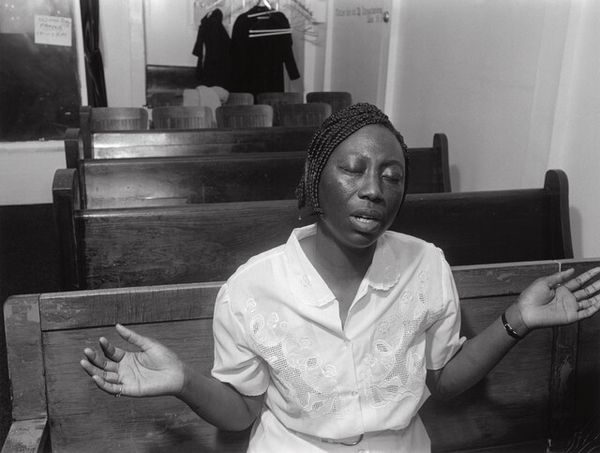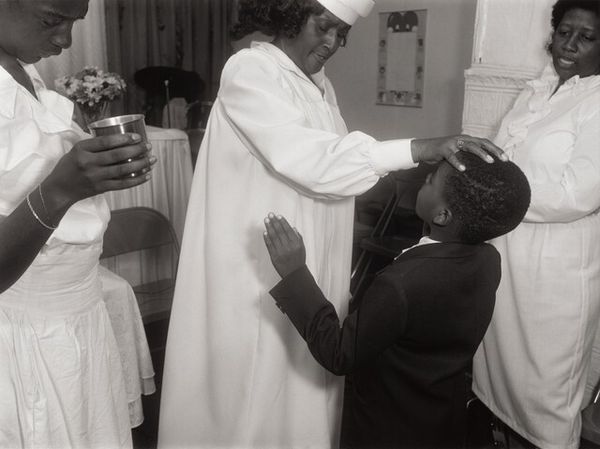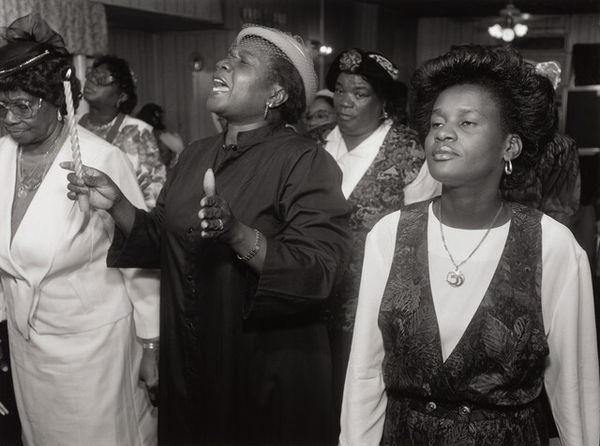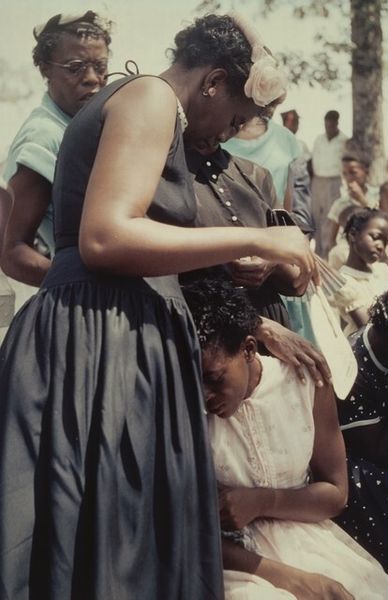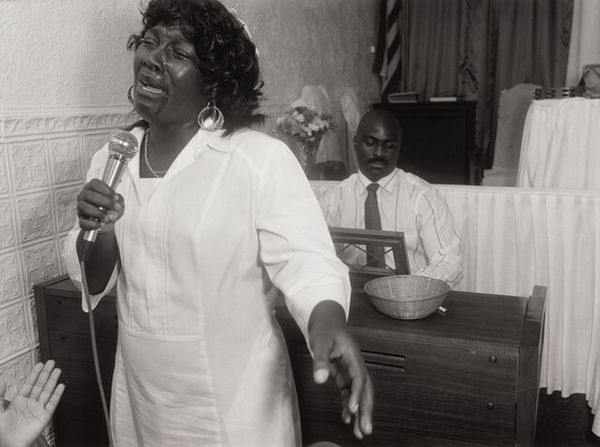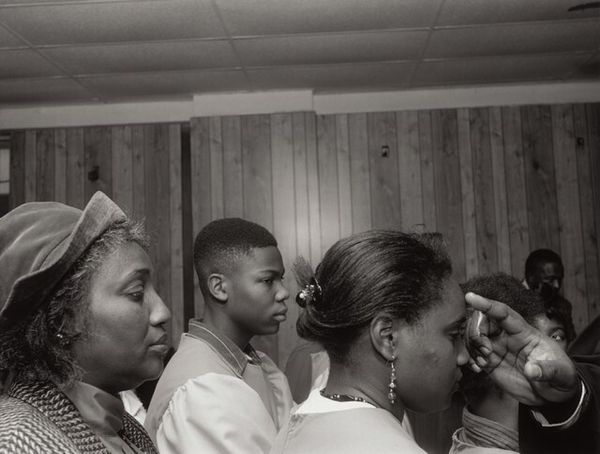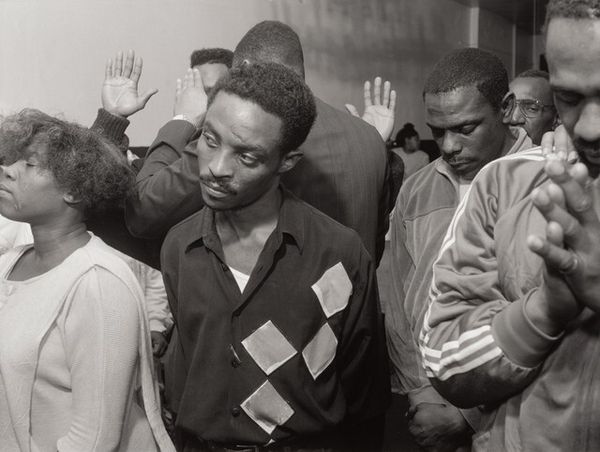
photography, gelatin-silver-print
#
portrait
#
black and white photography
#
black and white format
#
social-realism
#
photography
#
gelatin-silver-print
#
monochrome photography
#
monochrome
Dimensions: image: 24.3 × 32.5 cm (9 9/16 × 12 13/16 in.) sheet: 27.94 × 35.56 cm (11 × 14 in.)
Copyright: National Gallery of Art: CC0 1.0
Curator: This is an untitled black and white photograph by Thomas Roma, taken in 1993. It's a gelatin silver print. What strikes you about it? Editor: The weariness. It's palpable. Everyone looks either contemplative or simply exhausted. The composition feels like we're intruding on a very intimate, though public, moment. Curator: Absolutely. Roma is known for capturing those kinds of moments, especially within Brooklyn's communities. Thinking about gelatin silver prints, the process itself involved coating paper with light-sensitive emulsion which means a very manual, chemical-heavy labor. Editor: And this ties directly to social realism, wouldn’t you agree? These are working-class people captured in a raw, unglamorized manner. The black and white emphasizes the starkness. Think about the cultural and social landscape of Brooklyn in the early 90s. Curator: Definitely. There were socioeconomic pressures, racial tensions and the aftereffects of the crack epidemic all influencing community life. Roma was embedded in that reality. But what also draws me is his engagement with the materiality of photography. How do the prints circulate, who sees them and what purpose do they serve in documenting community life? Editor: Precisely. The distribution and exhibition of these works really shaped their message. Think about galleries versus community centers, the intended audience and the political act of bearing witness through imagery. Also consider the subjects themselves: their participation or lack thereof in Roma’s project. Curator: The framing within established art institutions obviously lends it a certain value and a form of legitimacy. This raises interesting questions about the consumption of images of social struggle and their marketability. Editor: Exactly. It forces us to reflect on the ethics of representation and the gaze through which we view these photographs. Roma, as an outsider, is engaging and interpreting Brooklyn. Is he exoticizing these realities, or bringing forth the true representation of the borough? The political reading can be dense. Curator: Well, by showing the work, he brings awareness and stimulates reflection around social matters. Regardless of the different angles to which one can argue. Editor: It reminds me that artworks are not simply aesthetic objects. Curator: Indeed. The dialogue around them are always contextual.
Comments
No comments
Be the first to comment and join the conversation on the ultimate creative platform.



